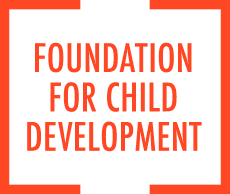https://www.fcd-us.org/early-childhood-education-of-hispanics-in-the-united-states/
This paper describes what is currently known about early childhood education for Hispanic children in the United States and suggests what can be done to help Hispanic children to start school prepared and to be academically successful during the primary grades.
Social demographics document that the racial/ethnic composition of the United States is changing rapidly, especially among the nation’s young. As recently as 1950, African Americans, Hispanics, Asian Americans, and Native Americans constituted about 15% of the nation’s under-18 population. Collectively, these groups currently constitute about 40% of American children and youth, and are projected to reach half or more of the under-18 age segment within another generation or so.
Leading this rapid demographic shift has been the extraordinary growth of the Hispanic population. Although Hispanics were only a few percent of the nation’s children and youth in 1950, they are now the largest racial/ethnic minority segment of the child population. In 2002, there were nearly 13 million Hispanic children and youth in the United States, about 18% of the nation’s under-18 population. Hispanics were an even larger share of the very young that year. Of the 4 million babies born in the United States in 2002, nearly 877,000 were Hispanic, about 22% of the total — up from 16% of the births a decade earlier.
It is anticipated the number of Hispanic children and youth will continue to grow rapidly for years to come. For example, the under-18 Hispanic population is projected to grow to over 17 million by 2020.
An important characteristic of the growing Hispanic population is the low average level of educational attainment of Hispanic adults, especially relative to the non-Hispanic whites and to Asian Americans. In 2002, among Hispanics over 25, about 27% had less than a 9th grade education, and only 11% had completed a bachelor’s degree or more, while the comparable percentages for whites were 4% and 29%.
On a more positive note, the Hispanic immigrant population has become better educated over time, and some segments are now generally well educated. Among Hispanic adult immigrants in the 1990s, about 59% had completed high school or college — 41% had a secondary degree and another 18% had finished college. Immigrants from South America led the way, with 86% having completed at least a high school degree and a third having completed college; but, among the largest Hispanic immigrant segment, Mexican Americans, only 44% had completed high school or more.
The impact of education levels of adult Mexican immigrants can be seen on the composition of Hispanic births. In 2002, about 70% of the 877,000 Latino babies born in the United States had a mother of Mexican origin. And, among the 877,000 Hispanic babies, only 52% had a mother who had a high school degree or more, and only 8% had a mother with a college degree. In contrast, 88% of the white babies had a mother who had graduated from high school or more, and 34% had a mother with a college degree. Therefore, children from low-income and Mexican-origin families seem to be a prime group to target via improved research outcomes, policy, and practice.
Despite extensive efforts over the past few decades in the United States to raise academic achievement among educationally and economically disadvantaged elementary and secondary school students, including low socioeconomic status (SES) Hispanics, progress has been slow. It has been especially difficult to raise achievement levels in high school, a problem of increasing concern to policymakers.
On a more promising note, there is a growing body of evidence that high quality prekindergarten programs (those for 3- and 4-years-old) can have a positive impact on the school careers of many children, particularly those from low SES families. There also are some promising approaches to nurturing the cognitive development of infants and toddlers from disadvantaged circumstances. In addition, some elementary school improvement strategies seem to be producing meaningful academic achievement benefits for low SES students. As a result, there is reason to believe that the period from birth through age eight currently constitutes the best window of opportunity for making improvements in the educational trajectories of disadvantaged children, including Hispanics, in the United States.
The two broad purposes of this review are: 1) to describe what is currently known about early childhood education for Hispanic children in the United States; and 2) to suggest what might be done to expand and improve early childhood education in ways that will help more Hispanic youngsters become well prepared to start school and, subsequently, to be academically successful during the primary grades. Consistent with these purposes, this review focuses on Hispanic children from infancy through the third grade, roughly 0-8 years of age. The first section reviews the demographics of the burgeoning young Hispanic population in the United States. The second section reviews academic achievement patterns of U.S. children in kindergarten through third grade from the perspective of how Hispanic youngsters fare compared to their peers from other racial/ethnic groups. The third section discusses evidence on the capacity of K-3 school improvement efforts to raise student achievement, especially for underrepresented minority students, including Hispanics. The fourth section reviews information on preschool access and program quality. The fifth section discusses how much high quality preschool programs are actually able to improve the school readiness of young children, and what might be done to help them to become more effective in this area, especially for Hispanic youngsters. The final section identifies a number of topics and questions that need to be addressed, if the early childhood education of Hispanics is to be markedly improved in the United States.
